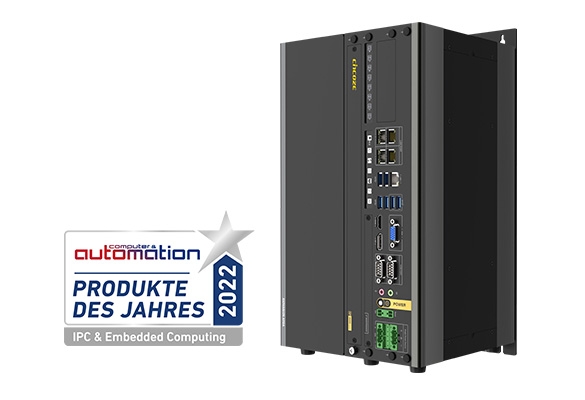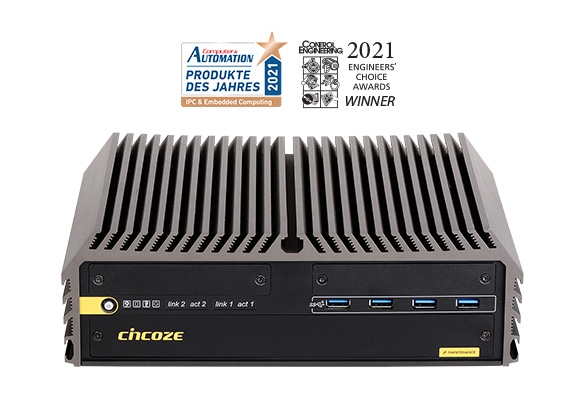
— by Circuit Cellular
The GPU has been part of computing ever since the first pixel hit a display. Still, its role has changed dramatically from its original function to embedded GPUs, lifelike 3D gaming and now general-purpose GPU computing.
This article takes a deep dive into this critical hardware component that powers AI, computer vision, and a whole slew of futuristic computer goodness. We will attempt to sum up what the GPU is, why it’s important, how they apply to industrial computers, what it’s used for, why you might need one, and the options available when picking them.
Definition: What is a GPU?
The graphics processing unit (GPU) is the hardware component that takes instructions for visual display and puts the pixels on the screen where they are meant to go.
According to Intel, GPUs are designed for parallel processing and are, “used in a wide range of applications, including graphics and video rendering. Although they’re best known for their capabilities in gaming, GPUs are becoming more popular for use in creative production and artificial intelligence (AI).” (Source: Intel)
That last part is important because the modern general-purpose GPU is no longer limited to just displaying images on the screen. It has become the powerhouse behind the processing of complex machine inputs that are possible but just too slow for the CPU. So how did this come about?
Brief history of GPU computing
For the sake of accuracy, all computers have a GPU if they display images on a screen. There are two main types. Basic GPUs, often integrated into modern CPUs, provide core functionality for most office or home situations. Dedicated graphics cards with powerful GPUs are what we refer to in this article.
NVIDIA coined the term GPU back in 1999, with the release of the GeForce 256, touted as “world’s first GPU.” (Source: ResponseSource) Although initially intended for graphics-intensive tasks, the general-purpose GPU has made its way into other fields. These include oil exploration, image processing, statistics, stock options pricing, linear algebra, and anything that needs massive-scale mathematical number-crunching.
Consequently, GPUs branched out from image rendering for games into multiple new areas. But after years of pushing CPUs to perform ever faster, why did the GPU come to take the spotlight?
What does the GPU do?
The GPU is the math whizz in the class. It performs mathematical calculations and executes mathematical algorithms quickly.
Unlike CPUs that perform a variety of general computer tasks like access memory and hard drives, amongst others, GPUs perform a much more limited set of functions.
Parallelism is the driving force behind these capabilities. Instead of performing complex functions sequentially on a CPU with up to 18 cores, mathematical tasks are passed off to the GPU with hundreds or even thousands of cores working at the same time.
This processing power is what AI, machine vision, and deep learning require. GPU computing can be used in graphics rendering for artists and gamers, HPC and supercomputer workstations, edge and industrial fields. (Source: NVIDIA)
The GPU’s role in visual processing
The GPU has played a vital role in creating visually stunning imaginary 3D worlds in computer games. That same core processing power now brings computers into the real world and makes them “see” in a way that allows them to make decisions on that visual input.
This ability to process the incoming visual data is the primary role of the GPU and is what sets a GPU computer apart from a regular one. Of course, any computer with a camera can do this in a limited capacity. Still, it’s the equivalent of a near-sighted driver trying to drive through the mist with fogged up windows after they forget their glasses at home. That’s pretty slow going if you want to arrive alive. The GPU provides the keen eyes and reaction time of an F1 driver on race day, taking in every input with intense detail, and acting on that input.
Acting on that input is key to making the “seeing” work well. So how does this play out for industrial applications?

FIGURE 2. During the COVID 19 outbreak, by deploying automated thermal imaging systems powered by Cincoze GM-1000, it successfully performed mask detection, face recognition, image search, and footprint tracking through machine vision, helping streamline the process and lowering labor costs.
What is an industrial GPU computer?
An industrial GPU computer incorporates the same design principles as a general industrial computer intended for harsh industrial environments. These general features could include rugged design, redundant components, shock resistance, vibration resistance, fanless design, wide operating temperature range, ESD protection, water resistance, and dust resistance.
The core differentiator is that an industrial GPU computer supports at least one GPU expansion card, typically through a PCIe x16 expansion card slot in a regular-sized computer or the smaller Mobile PCI Express Module (MXM) in an industrial embedded system.
The GPU introduces extra stress to the overall system that must be tackled. GPUs produce heat that must be dealt with through specialized cooling mechanisms that go beyond just adding fans to the system. GPUs also introduce extra power drain (the reason for all that extra heat), so the power supply to the system must be able to provide the additional power for the GPU.
The GPU, whether full-size or compact, needs adequate internal space. Intended applications are often critical systems that must operate continuously, so it becomes double important that systems stay online, and in the worst case, anticipate possible breakdowns and take evasive action to avoid damage.
Some features to look for on an industrial GPU computer include:
Cable- and jumper-free by utilizing alternative or more reliable connections. Removing cables and jumpers that can shake free removes a possible source of failure that is particular to applications where the computer experiences lots of vibration and knocks.
Extruded aluminum chassis that can wick away heat from the internal parts and into the surroundings.
Vibration and shock resistance to withstand the rigors of industrial applications. A slew of factors impact this, including the mechanical structure, rubber gasket choice and design, as well as cable- and jumper-free design. A 5/50 Grms rating is a good start, but military ratings have become the go-to choice, with MIL-STD-810G providing stringent guidelines for rugged computers.
Fanless design. Typical high-performance industrial GPU computers generate a lot of heat, so fans are needed to cool the system down. New, low-power GPUs optimize performance so that a good thermal design can wick away heat without needing fans, thereby eliminating the biggest source of mechanical failure in most computer systems.
Wide operating temperature from -40℃ to 70℃. This is typically enough because even for applications in industry, the application locations are designed to maintain temperatures within this range, and often a narrower range.
ESD, overcurrent, and overvoltage protection provide assurance against damage to the system from errant electrical anomalies that could occur in industrial environments. In the rare situation that system shutdown does occur, a 0.2-second reboot time reduces downtime to an absolute minimum. Wide range 9-48 VDC support allows some room for voltage fluctuations.

FIGURE 2. Cincoze GP-3000 itself is passive cooling (fanless). To deal with the thermal challenges, the GP-3000’s unique omnidirectional cooling design and dust-proof external smart fan kits on both sides of the chassis effectively dissipate heat under full workloads in extreme conditions.
Easy maintenance makes it possible for onsite personnel to fix any problems. Because the last thing you want is to waste time waiting for a specialized outside technician while essential machinery sits idle. A user-friendly maintenance interface includes easy access to often hidden items, like AT/ATX power setting, clear CMOS, SIM card access, and hot-swap 2.5” SATA bay. Finally, customizing the base model, by adding PoE, LAN, and other I/O or functions, is simple through modular design, like CMI modules and CFM modules, which make these add-ons as easy as plug-and-play, and allow easy expansion at any time.
Industry certification simplifies hardware choice by setting the bar. Important certifications to consider are EN 50155 for railway applications, E-mark for in-vehicle, or even MIL-STD-810G promulgated by the US Department of Defense to qualify military equipment in the pursuit of ever-higher standards. When multiple certifications are available and widely used for particular applications, then the product should ideally have these certifications.
Before diving into the specific applications of industrial GPU computers, let’s have a quick look at what options are available.

